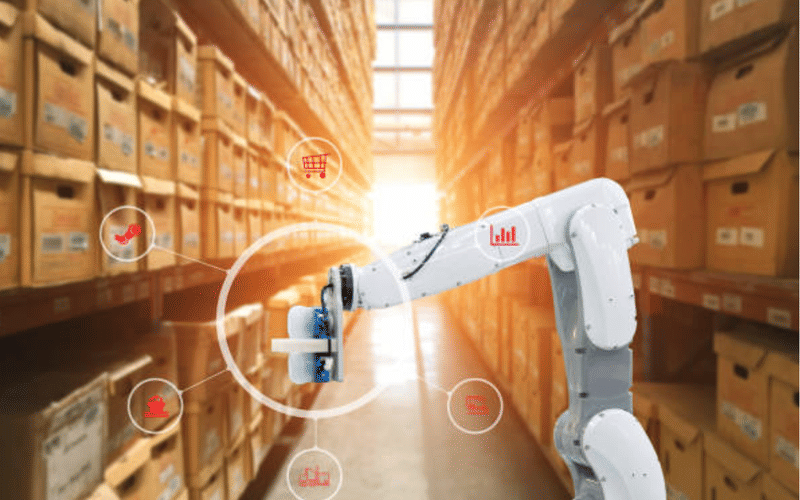Revolutionising the consumer experience and the impact of smart packaging
The emergence of smart packaging is not merely a trend but a revolutionary shift that promises to enhance consumer engagement, improve product safety, and redefine supply chain efficiency.
04 Jul 2024 | By Ismail Sutaria
Understanding smart packaging
Smart packaging is the integration of sensors, RFID, QR codes, and other advanced technologies into product packaging Near Field Communication (NFC), RFID tags, and even augmented reality (AR) features. These innovations enable packaging to interact with consumers, provide real-time information, and even communicate with other devices through Internet of Things (IoT). Unlike traditional packaging, which primarily serves to contain and protect products, smart packaging adds layers of functionality that extend beyond the point of sale.
Enhancing consumer engagement
The primary benefit of smart packaging is its ability to enhance consumer engagement throughout the product life cycle. For example, QR codes on food packaging can provide detailed information about ingredients, and nutritional content, and even suggest recipes based on the product inside. Moreover, interactive packaging elements, like augmented reality (AR) experiences are triggered by scanning a package, further creating memorable interactions with products. For example, imagine a cosmetics box that allows customers to virtually try different shades of makeup. Such experiences not only entertain but also educate consumers about the product's features and benefits.
Improving product safety and authenticity
Smart packaging plays an important role in ensuring product safety and authenticity. RFID tags and sensors can track a product's journey from manufacturing to retail shelves, enabling real-time monitoring of temperature, humidity, and other environmental factors that could affect product quality. Furthermore, smart packaging can also help in incorporating tamper-evident features that alerts consumers about if a product has been opened or compromised. This added layer of security assures consumers of the product's integrity and builds trust in the brand.
Optimising supply chain efficiency
Beyond consumer-facing benefits, smart packaging revolutionises supply chain management by highlighting valuable data insights. IoT-enabled sensors can transmit information about inventory levels, location tracking, and shelf-life status in real time. Additionally, predictive analytics powered by smart packaging data helps manufacturers to anticipate demand trends and optimise production schedules accordingly.
Applications across industries
The impact of smart packaging extends to diverse industries, each leveraging its capabilities to innovate and differentiate in competitive markets. Smart medication packaging reminds patients to take their medication, monitors dosage adherence, and provides healthcare providers with patient’s health data in real time. Smart labels on clothing can provide care instructions, suggest styling tips, and enable customers to reorder directly from the garment tag. In the food and beverage industry, Smart packaging here can indicate freshness, nutritional information, allergen alerts, and suggest complementary food pairings.
Drivers of smart packaging revolution
Consumer Demand for Transparency and Information makes smart packaging more relevant, as it provides real-time data about product ingredients, sourcing, and environmental impact. This builds trust and empowers consumers to make informed purchasing decisions. Rapid advancements in sensor technology, IoT connectivity, and data analytics have lowered the barriers to implementing smart packaging solutions. These innovations help packaging become more than just a container, transforming it into an interactive interface that increases product utility.
With real-time monitoring of product conditions and ensuring compliance with safety standards, smart packaging helps brands mitigate risks and uphold regulatory compliance. Smart packaging optimises supply chain efficiency, thereby, minimising waste, reduces logistics costs, and improves overall supply chain resilience. As consumers and brands prioritise sustainability, smart packaging solutions are designed to reduce environmental impact. Features such as biodegradable materials, recyclability, and optimised packaging designs contribute to achieving sustainability goals.
Emerging trends in smart packaging
Smart packaging is evolving to offer interactive and personalised experiences that engage consumers beyond the point of sale. Technologies like augmented reality (AR), QR codes, and NFC (Near Field Communication) enable consumers to access product information, receive personalised recommendations, and participate in digital experiences tied to the product. It also uses authentication features such as RFID tags, holographic labels, and blockchain technology, cutting down on counterfeit products. Consumers can now verify product authenticity, ensuring they receive genuine products while safeguarding brand reputation.
Moreover, active packaging solutions are known to extend shelf life, maintain product freshness, and enhance safety. On the other hand, Intelligent packaging uses sensors and indicators to monitor factors like temperature, humidity, and contamination, ensuring product quality throughout its lifecycle. The integration of smart packaging with IoT platforms has enabled seamless connectivity between packaging, devices, and cloud-based analytics. It gives data-driven insights into consumer behavior, product usage patterns and supply chain dynamics.Brands can differentiate themselves with the help of smart packaging by offering customisable packaging solutions. Personalised packaging designs, limited-edition releases, and interactive packaging experiences create memorable brand interactions and foster brand loyalty.
Additionally, Smart packaging solutions are becoming more cost-effective and scalable for mass adoption . Innovations in materials, manufacturing processes, and digital printing technologies help reduce production costs while enhancing the functionality and appeal of smart packaging solutions.
The future outlook
Looking ahead, the evolution of smart packaging holds immense potential. Advancements in nanotechnology can lead to packaging that enhances the shelf life of perishable goods.
Furthermore, as 5G networks become more widespread, the speed and reliability of data transmission between smart packaging and connected devices will further amplify its impact on consumer experiences.
However, challenges such as cost implications, data privacy concerns, and the need for standardised communication protocols remain.
Conclusion
In conclusion, smart packaging thus represents a paradigm shift in how products are perceived, purchased, and consumed. By bridging the gap between physical products and digital experiences, smart packaging helps in enhancing consumer convenience and safety. As technology continues to advance, the possibilities for smart packaging are becoming limitless, thus, promising a future where every package tells a story and every consumer interaction is meaningful and informed.


